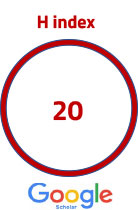| Acceptance rate | 46% |
|---|---|
| Time to first decision | 20 days* |
| Time to decision with review | 50 days* |
*Approximate number of days
**The days mentioned above are averages and do not indicate exact durations. The process may vary for each article.
ACTA Pharmaceutica Sciencia
2024 , Vol 62 , Num 1
Historical eponyms of vitamin A (1863-1954)
1 Department of the History of Pharmacy and Ethics, Erciyes University Faculty of Pharmacy, Kayseri, Türkiye2 University of Central Florida College of Medicine, 6850 Lake Nona Blvd, Orlando, FL 32827 United States of America
3 University of Florida, Division of General Internal Medicine, 2000 SW Archer Rd. Gainesville, FL 32608 United States of America
DOI : 10.23893/1307-2080.APS6201 The discovery of vitamin A by Socin in 1891 and its isolation in crystalline form by Holmes and Corbet in 1937 paved the way for further discoveries involving its role in storage, photoreceptors in the eye, the cornea, epithelium, and normal immune function. Various symptoms and physical findings have been recognized and eponymously named a syndrome in honor of the person(s) who first reported those clinical entities about vitamin A. Seeking to fill the historical gap in the literature, the focus of this paper is to describe the eponymic cells, diseases, observations, syndromes, or tests ascribed to hypovitaminosis and hypervitaminosis A. In a chronological sequence based on the initial publication year of related reference, we presented concise biographical data concerning the scientist(s) responsible for recording the eponym, along with the presentation of the original depiction of the sign. We identified 12 eponyms related to vitamin A that were described between 1863 and 1954. These eponyms were named after 17 scientists from nine countries. Among them, Marie and Sée described the phenomena occurring in infants with hypervitaminosis A. The detailed and comprehensive description of the cornea or retina in vitamin A deficiency by Bitot, Lobo, Petzetakis-Tzakos, and Uemura remains relevant today. Keywords : avitaminosis, biography, deficiency disease, eponyms, vitamins





